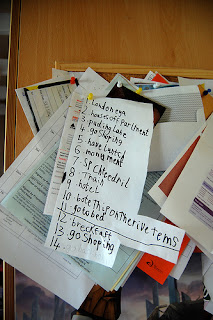 |
| Lists. From Flickr user James West. |
1) Cross-promotion! Once you have your list all in one place and de-duped, you'll have remarkable opportunities to cross-promote your various initiatives. The people on your different lists already like your brand and are more likely to respond than people who haven't ever subscribed.
2) Re-activation! People who subscribed to a campaign you ran a couple of years ago are far more likely to be interested in your current activities than people who've never subscribed before. Here's your chance to reactivate them and opt them in to a more general list.
3) Information! Find out who your most active subscribers are. Don't you want to know how many people are subscribed to multiple lists, and to which ones? If you see that there are some common trends, it might be time to further consolidate your messaging strategy. You'll also find that some of your buyers from one list are prospects on another list. Shouldn't you be giving them loyal customer love whenever you talk to them? (Yes.)
These things are really, really important, which is why I've given them three big exclamation points.
Mine your own email list now, before you go out there and pay a whole bunch of money to get new subscribers. Once you're all set, THEN, you go get some more new subscribers.
How? Ask your shiny, buffed, nicely ordered list to recruit a few friends. The best businesses often comes from referrals. You'll be able to do this in a targeted way, now that you better understand your customers' behavior.
How's your email program going and what do you wish was different? Do you need help consolidating lists? I've done it before, and I'll do it again (just let me find my spurs). Drop me a line and I'll be glad to help.
Related Posts
Why Testing Is Key
The Best Approach to Email Marketing
No comments:
Post a Comment